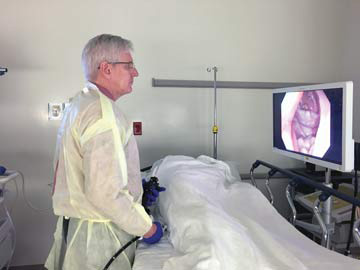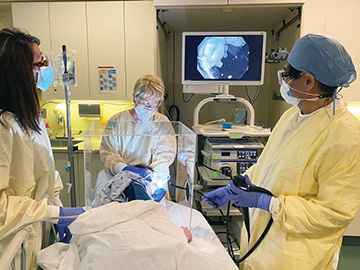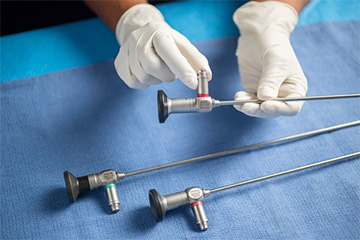Research shows flattening folds in the mucosa improves adenoma detection rates.
 BETTER VIEW Skilled endoscopists could better diagnose adenomas with the help of mechanical manipulation devices that expose difficult-to-visualize folds and blind spots.
BETTER VIEW Skilled endoscopists could better diagnose adenomas with the help of mechanical manipulation devices that expose difficult-to-visualize folds and blind spots.
Colonoscopy is the gold standard for colorectal cancer screening and surveillance, but folds and blind spots within the colon can harbor precancerous polyps that may be easily missed by skilled endoscopists, says Seth Gross, MD, a gastroenterologist at NYU Langone Health in New York City. He says caps and cuffs attached to the distal tips of colonoscopes provide mechanical manipulation of colonic folds to increase visualization of adenomas.
Those attachments connect to the tip of the colonoscope before insertion and expand as the endoscopist withdraws the scope to flatten folds in the colon and hold the scope steady, providing a more centralized view for the physician.
This mechanical manipulation of the colon is a more effective screening technique than optical surveillance alone, according to Dr. Gross. His study, the first to compare the performance of colonoscope attachments, shows the balloon was more effective than the cuff in assisting endoscopists in detecting large and advanced cancerous growths.
The research, which included 727 patients, indicates the balloon attachment resulted in an adenoma detection rate that was nearly 10% higher than the cuff's results. Additionally, the number of adenomas detected per patient was significantly higher when the balloon attachment was used.
Dr. Gross, who presented his findings at the American College of Gastroenterology's annual meeting last October, says the balloon attachment has a short learning curve and provides physicians with improved visualization and control during colonoscopy screenings. "Increasing the detection of adenomas during colonoscopy will prevent the development of colon cancer and improve patient outcomes," he says.
.svg?sfvrsn=be606e78_3)



.svg?sfvrsn=56b2f850_5)